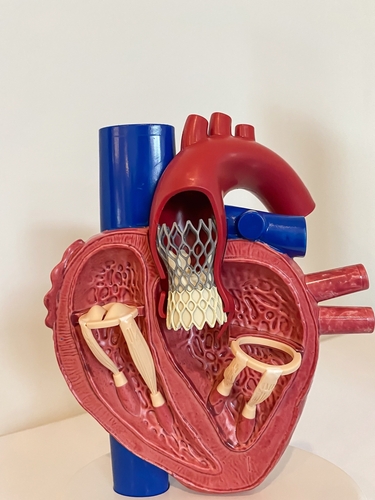Transcatheter Aortic Valve Implantation (TAVI) offers a significant improvement in quality of life for patients with severe aortic stenosis who are deemed unsuitable for traditional surgical valve replacement.
As you explore your options, understanding every aspect of the TAVI procedure, including the costs involved, is crucial for making an informed decision. This guide aims to demystify the process, explain the “TAVI procedure cost,” and prepare you for what to expect before, during, and after the procedure.
Understanding TAVI

TAVI is designed as a less invasive alternative to open-heart surgery for replacing a diseased aortic valve. This procedure is particularly beneficial for patients with significant risk factors that make traditional surgery too dangerous. It involves the insertion of a new valve via a catheter, typically through a small incision in the thigh. The new valve is expanded inside the existing valve, pushing the old leaflets out of the way and taking over the valve’s function immediately. This method greatly reduces recovery time and has been proven to improve survival and quality of life in high-risk patients.
Preparation for TAVI
Preparing for TAVI involves comprehensive cardiovascular evaluation to ensure that TAVI is the most suitable treatment option. This preparation includes a series of diagnostic tests like echocardiography, angiography, and possibly CT scans to assess the structure and function of your heart. Patients are also usually advised to discuss their full medical history, including any allergies, medications, or previous surgeries that might influence the procedure or anaesthesia. Patients should also prepare their homes for post-operative recovery, ensuring they have easy access to daily needs and minimal need for strenuous movement.
The TAVI Procedure
The day of the TAVI procedure begins with pre-operative preparations, including fasting from midnight before the procedure. Once in the cath lab or operating room, you’ll be placed under anaesthesia—either general or local with sedation, depending on your specific case. The doctor makes a small incision, usually in the femoral artery in your leg, through which the catheter is inserted. Guided by fluoroscopy, a type of X-ray, the new valve is positioned directly inside the diseased valve and deployed. The whole process typically takes one to three hours, and many patients are awake and talking shortly after the procedure.
Risks and Complications
While TAVI is less invasive and carries fewer risks than open-heart surgery, it is not without potential complications. These can include risks related to vascular access, bleeding, the need for a permanent pacemaker, and rare but serious risks like stroke or major vascular complications. Each patient’s risk profile is different, and your cardiac team will discuss these with you to provide a tailored risk assessment. They will also take extensive precautions to minimise these risks during and after the procedure.

Post-operative Care
After TAVI, patients typically spend one to a few days in the hospital. Initial recovery involves monitoring in an intensive care or cardiac unit where medical staff can closely observe your vital signs and the function of your new valve. Discharge planning includes instructions on medications, signs of potential complications, and follow-up appointments. At home, recovery includes managing pain, preventing infection at the incision site, and gradually increasing activity levels under the guidance of a healthcare provider.
Understanding Costs and Insurance
The cost of TAVI can be substantial, but it varies widely based on geographic location, hospital, and specific patient needs. Most health insurance plans and national health services in countries with public healthcare cover TAVI, but it is important to confirm what will be covered and what out-of-pocket costs you may need to pay. Understanding these financial aspects as part of your decision-making process is crucial.
Lifestyle Changes and Long-term Care
Post-TAVI, patients often need to make lasting lifestyle changes that can include dietary adjustments, regular physical activity, quitting smoking, and managing other cardiovascular risk factors. Regular follow-up visits with your cardiology team are essential to monitor the function of your new valve and overall heart health.
Patient Stories and Outcomes
Many patients who undergo TAVI report significant improvements in their symptoms of heart failure, such as breathlessness and fatigue, allowing them to enjoy a better quality of life. Hearing stories from others who have gone through the process can provide comfort and set realistic expectations for recovery and life after TAVI.
Conclusion
Undergoing TAVI is a significant decision that requires careful consideration and preparation. By thoroughly understanding the procedure, its benefits, and potential risks, you can make an informed decision about your heart health. Working closely with your healthcare provider to prepare for the procedure and follow-up care will help ensure the best possible outcomes.





